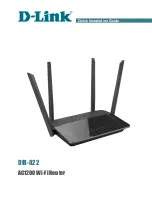
"Emergency release"
Opposite to the gunman attack function: If a signal is applied to
the input (level change Low to High), the RouterNode sends a
broadcast to all LockNodes. You can set whether the
LockNodes should respond to the broadcast (see
). This broadcast permanently couples all locks in
which the LockNodes are installed.
The locks remain coupled even after the end of the input event.
You must end the emergency release of the locks with a re-
mote opening command (the locks uncouple immediately
after the remote opening command has been received):
Use WaveNet (response "Remote opening")
LSM
If you apply a signal to the input through a fire alarm system
(see
), then you can open all
locking devices to enable emergency services to access them.
"Remote opening"
If a signal is applied to the input (level change Low to High), the
RouterNode sends a broadcast to all LockNodes. You can set
whether the LockNodes should respond to the broadcast (see
). This broadcast carries out a remote open-
ing.
The locking device couples for the pulse duration set in the
LSM (pulse opening). This also applies to locking devices in
flip-flop operation.
"Activation"
If a signal is applied to the input (level change Low to High), the
RouterNode sends a broadcast to all LockNodes. You can set
whether the LockNodes should respond to the broadcast (see
). This broadcast activates the locks in which
the LockNodes are installed.
You can then reuse locks that were previously deactivated.
This response only works with I/O RouterNodes of type RN2
from firmware version 40.8 onwards together with WaveNet
Manager version 2.6.6 or later.
WaveNet
(Manual)
5. WaveNet Manager
79 / 210
Содержание WaveNet
Страница 1: ...WaveNet Manual 07 04 2020...
Страница 183: ...9 Output is switched WaveNet Manual 5 WaveNet Manager 183 210...
















































